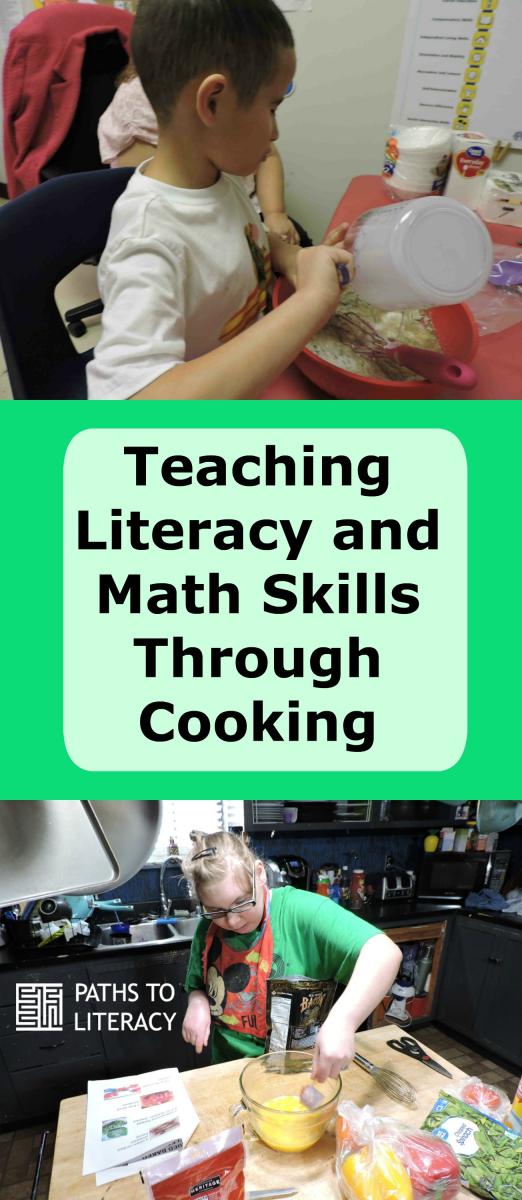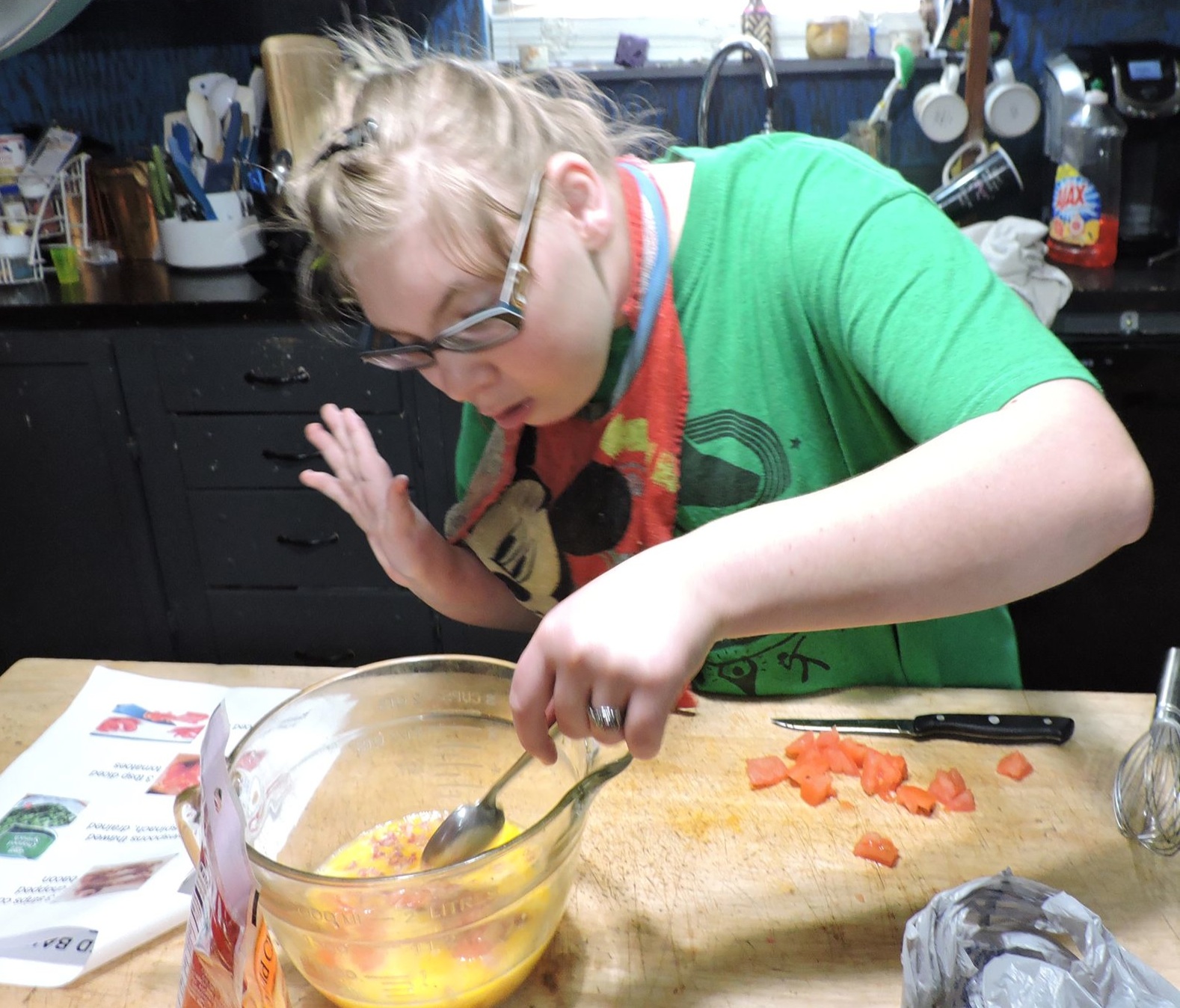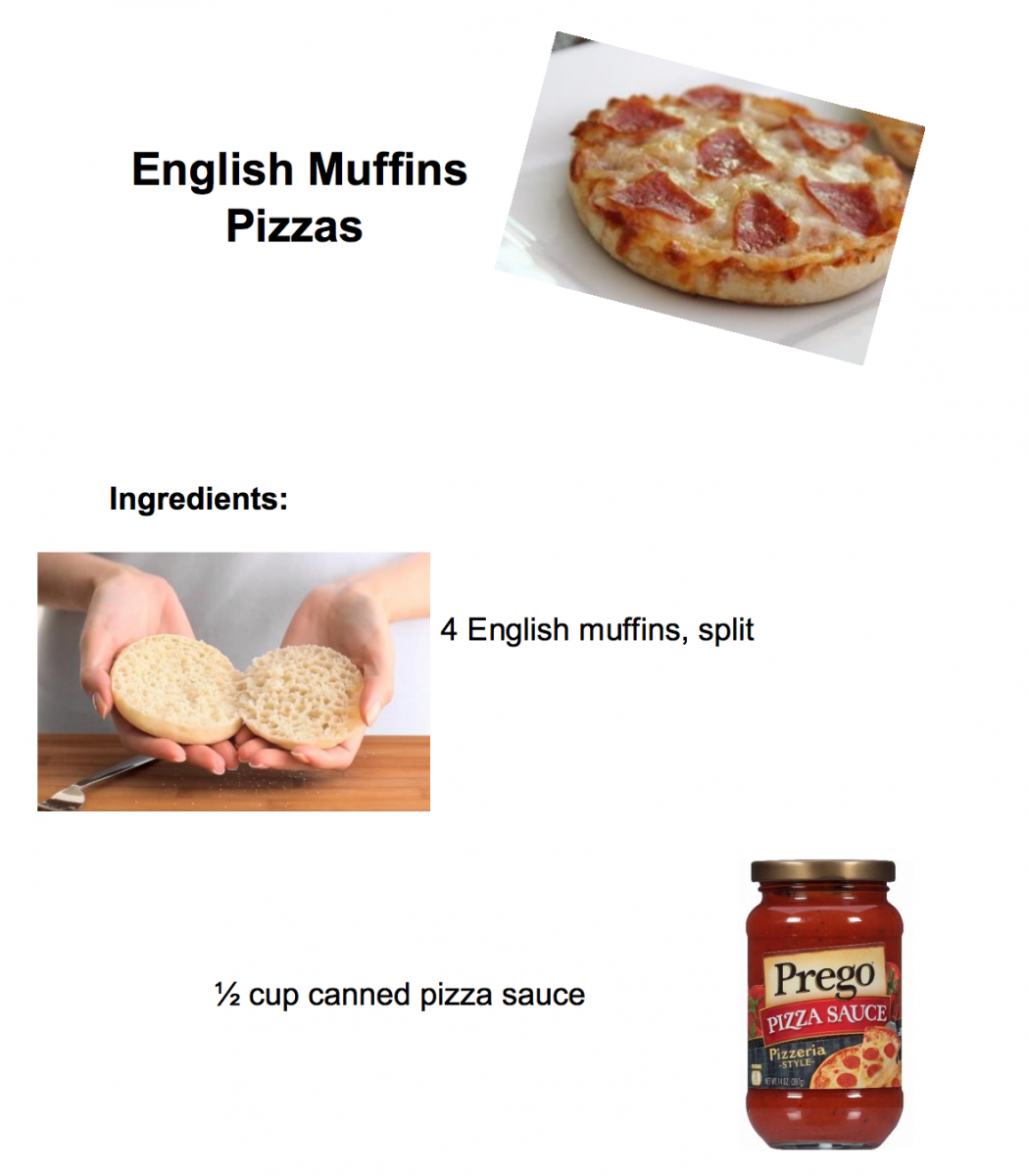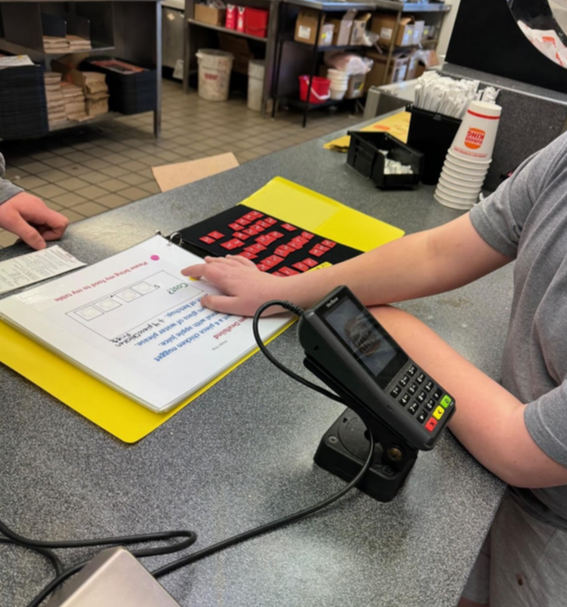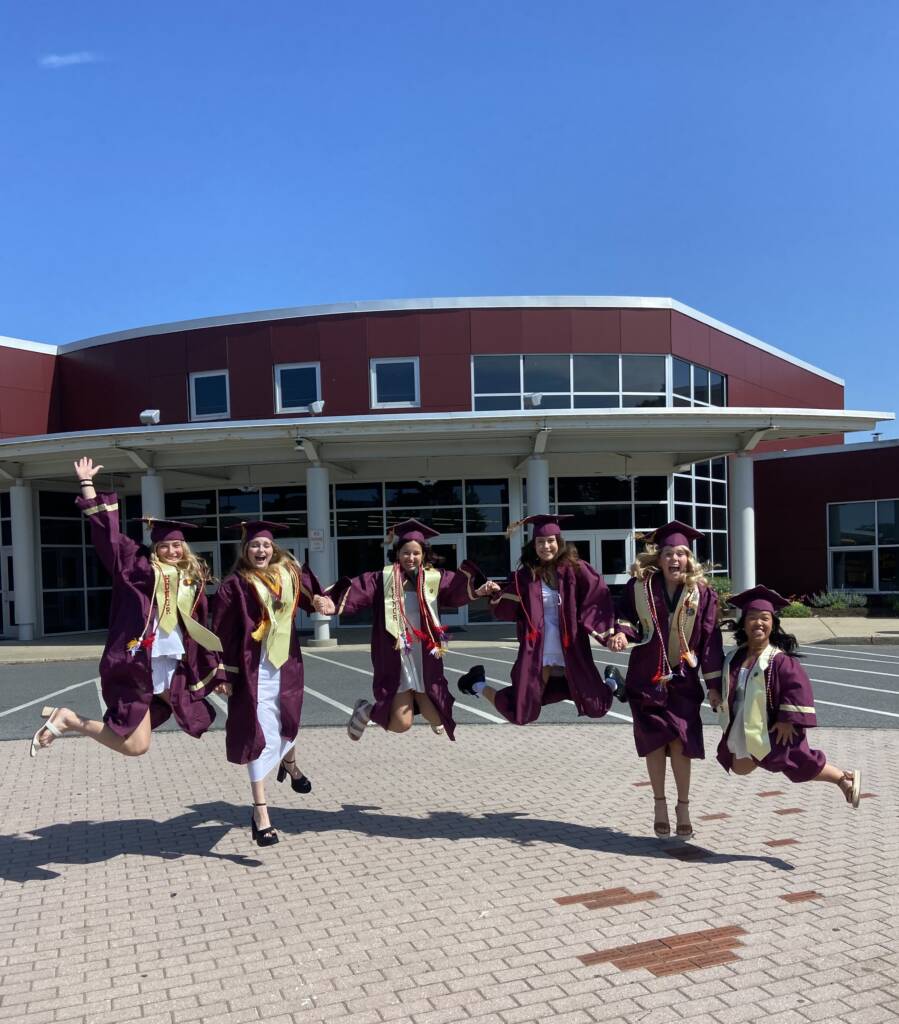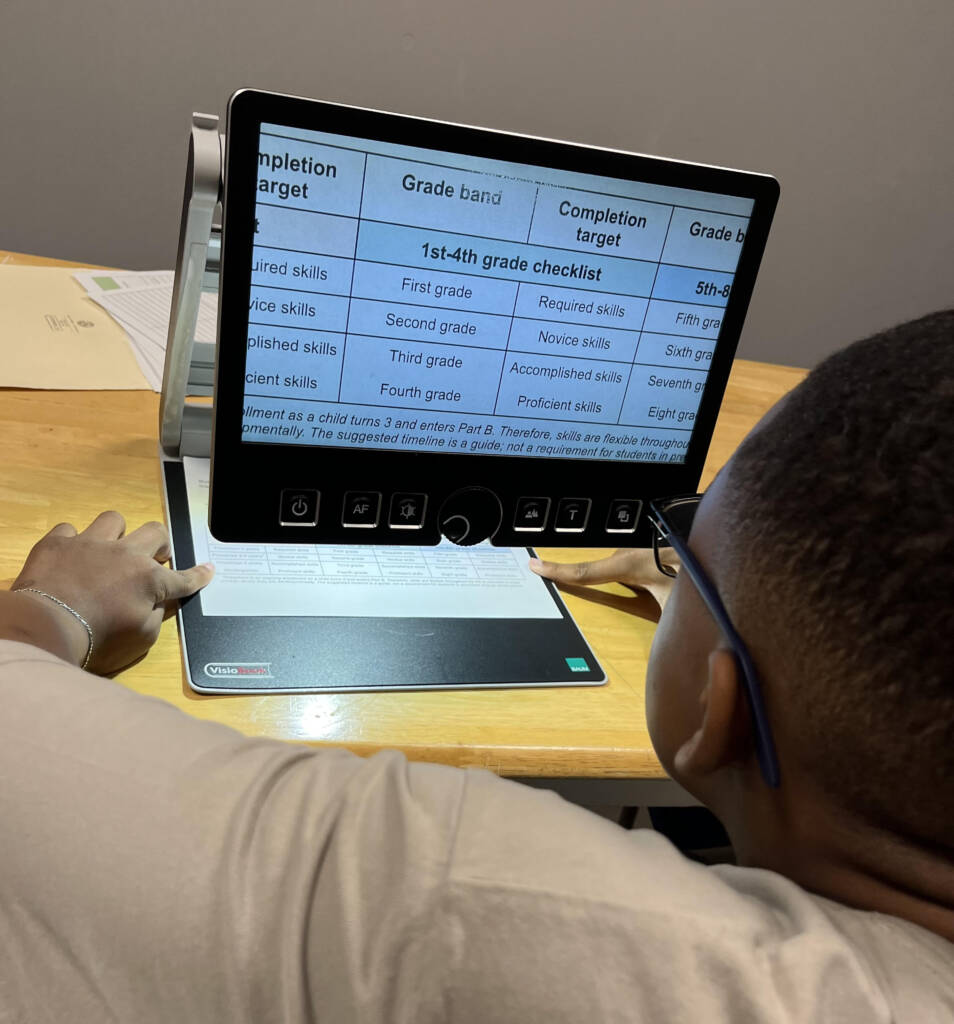Cooking is a great way to incorporate all areas of the curriculum in a motivating, practical activity or series of activities. Literacy (recipes in large print, braille, or audio), math (showing the real-world application of counting, adding and subtracting fractions, multiplication), and all areas of the Expanded Core Curriculum (including independent living skills, social skills, communication, orientation & mobility, and technology) can be taught through cooking, and the activity can easily be expanded to include shopping, sharing or selling the product, and having fun along the way!
Finding Recipes and Making Them Accessible
The students love to cook and finding recipes to try is fun! We look online and use the Google extension of Read & Write to first “simplify” the webpage (declutters) and then read the page. If this is a preferred recipe, we then emboss it or print it out in an enlarged font. Some recipes are given to us from other teachers or are in a cookbook. Frequently I copy these recipes at 129% from the cookbooks.
I purchased Stir It Up, a cookbook in both braille and print, that makes it easier for families and teachers to help their students if they haven’t mastered the braille code. Students may use electronic magnifying glasses like Pebble and Ruby. For audio, I either record myself reading the recipes, or invite a peer or parent to help, or use the app Seeing AI, which can scan and read recipes aloud.
See what I wrote about Visual Recipes for Non-Readers.
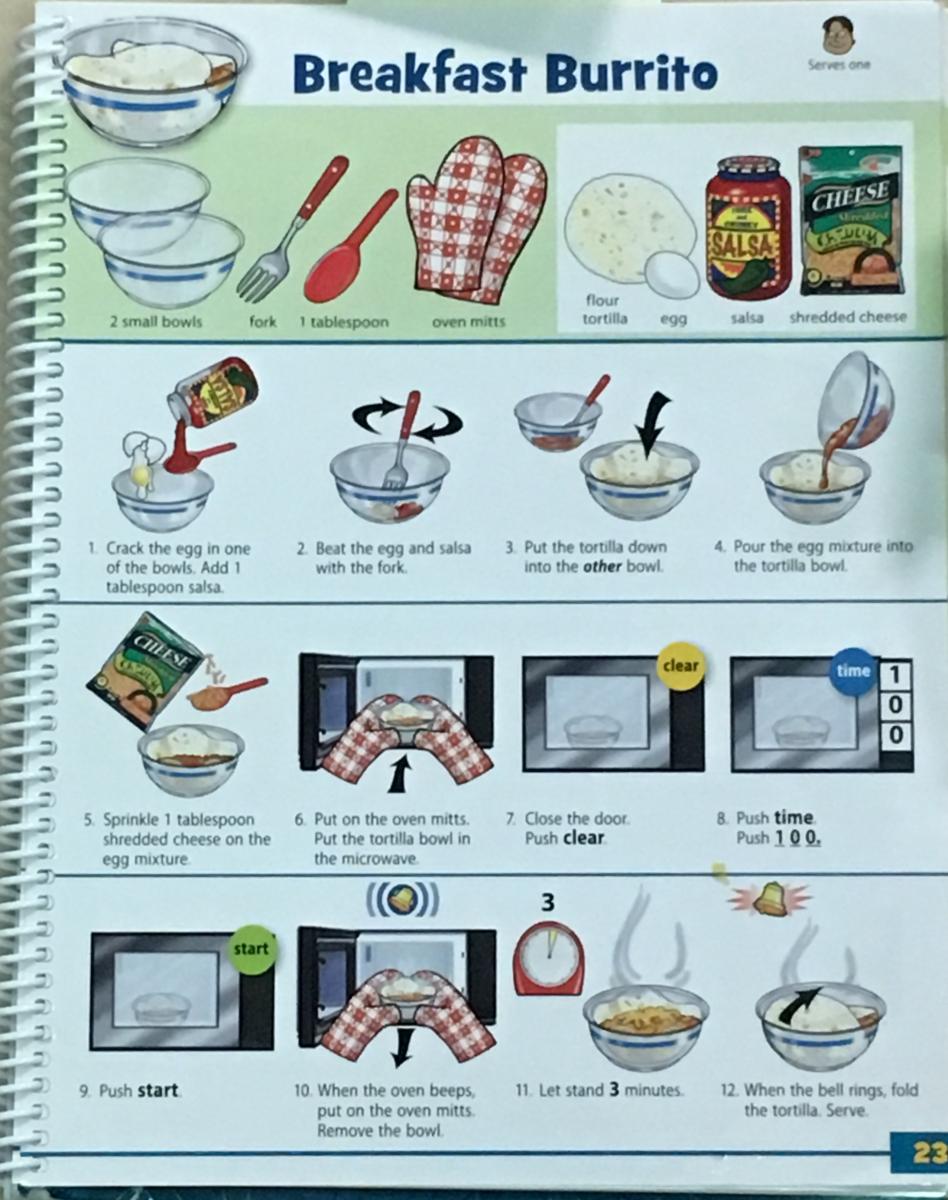
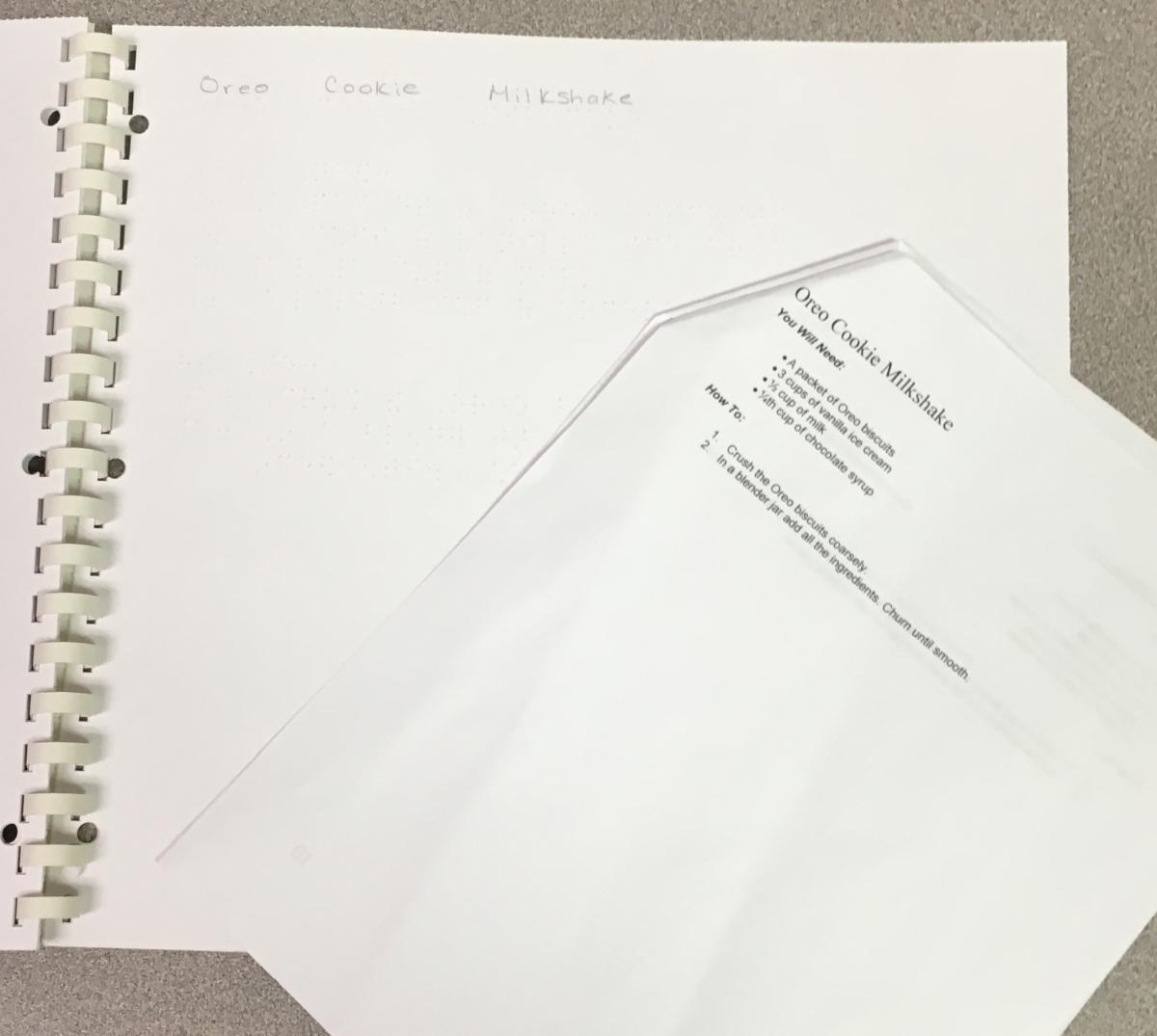
Sometimes I make my own picture recipes, depending on the needs of the students. One of the most popular ones is always English Muffin Pizzas!
Setting Up a Cooking Area
I often bring in the equipment we need, such as a toaster oven, a blender, mixer, even a burner. I don’t always have an area to cook while with my students and bringing in these items from home isn’t a problem for me.
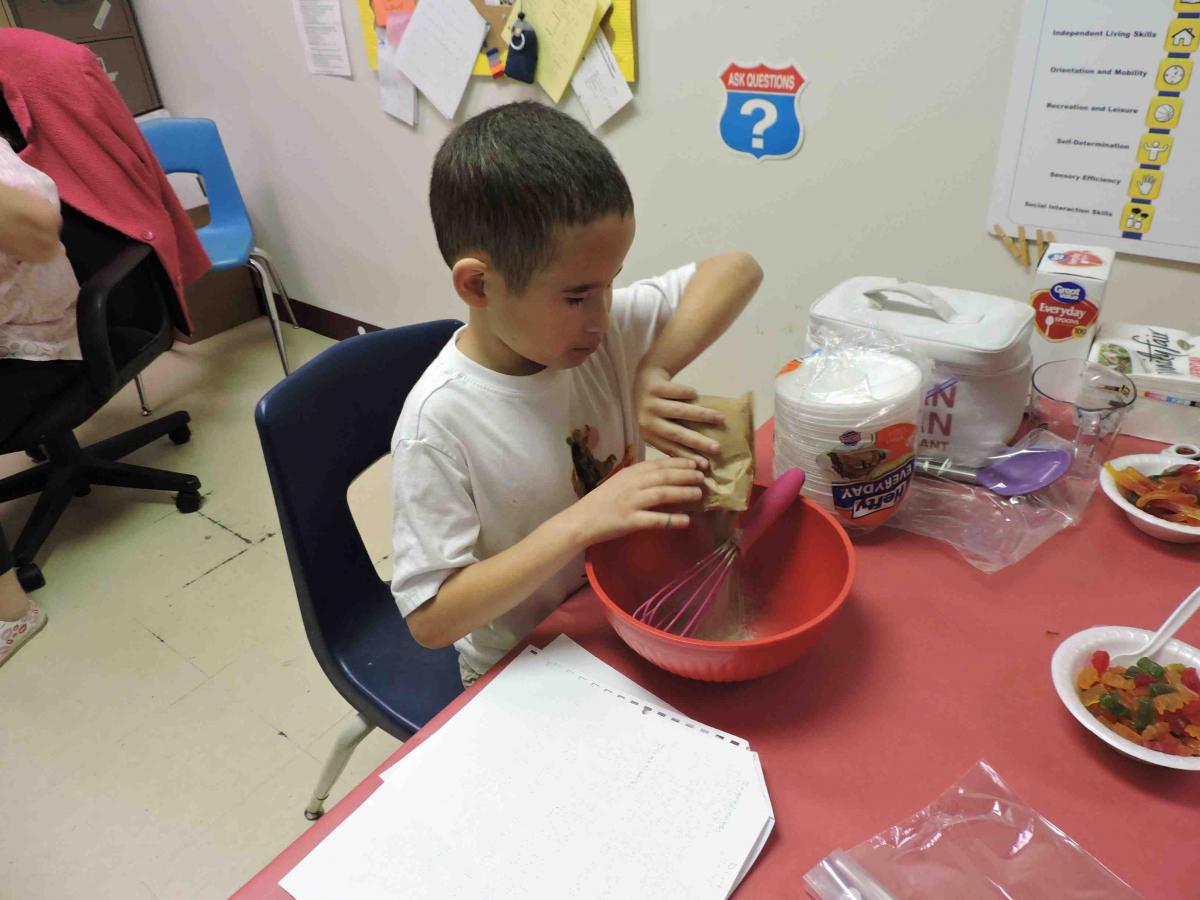
Making Food Items for Teachers
I’ve had students make a food items for teachers. The young man pictured below made “Dirt Pudding” for the administration and his teacher at school. We set up his environment with the table to blocking the door. He made the pudding to the viewing of his “customers”. They took turns sitting down and ordering their dessert to their specifications (gummy worms/bears and how many as well as how much pudding).
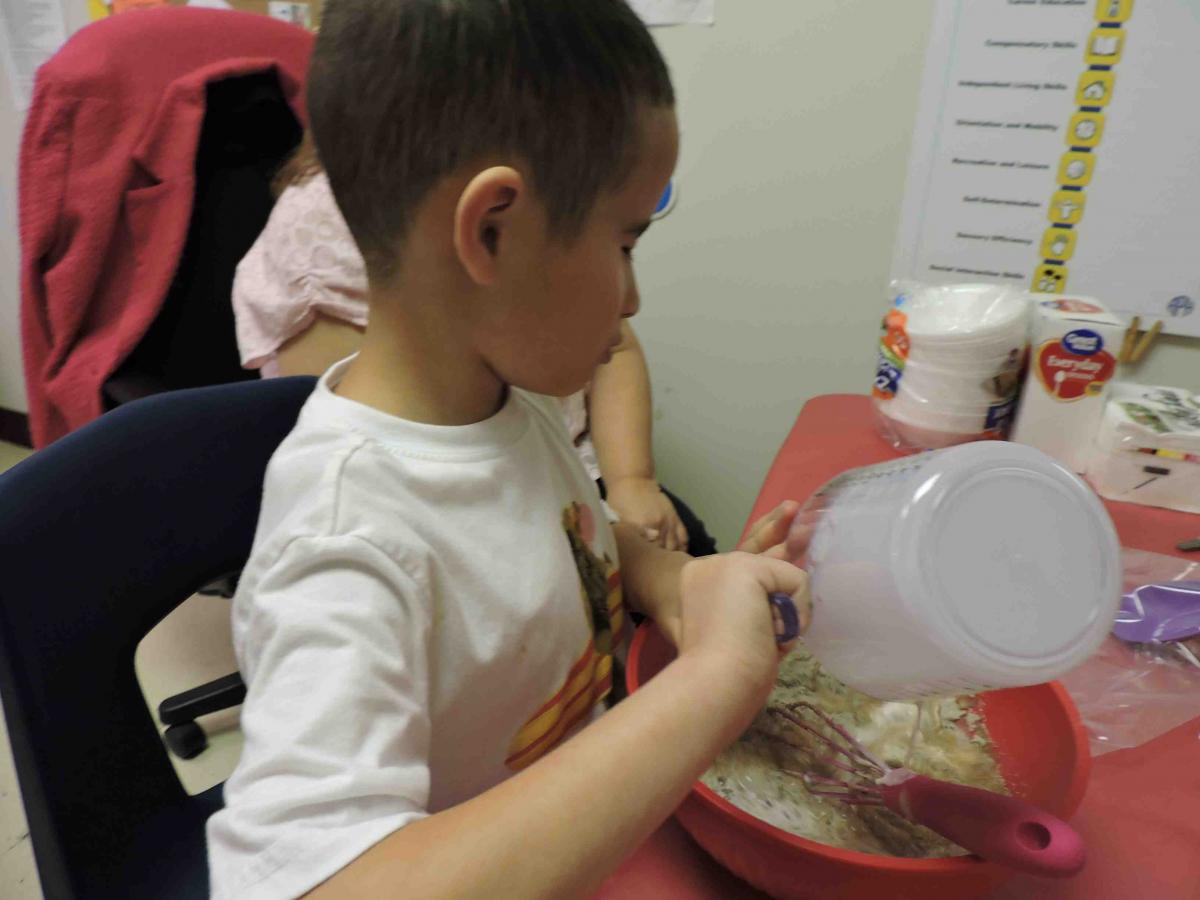
In the photo below, he is making dessert for his principal, Ms. Burnett. This was a fun way to incorporate reading (and learning that reading is more than just books!), food safety (washing hands, clean work environment, etc), career education (food service), communication (Speech therapist was on hand as well), just to name a few. This was also a chance for him to shine in an activity he enjoys. His sister also occasionally joins our lessons, so she can witness what he can do and shares her observations with her parents. We can show her how independent he is and show her ways to step back and let him try to do a task.
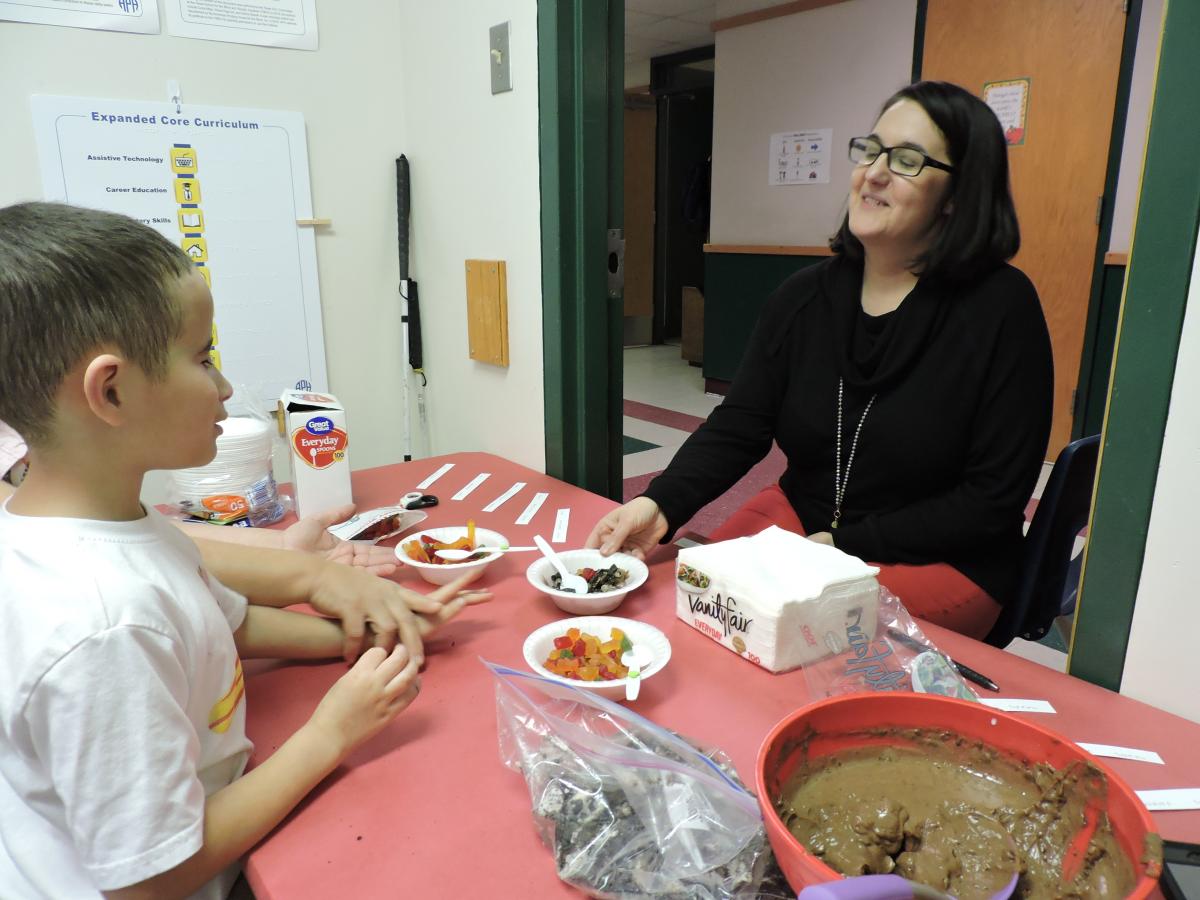
Cooking in the Home
For another student, the transition teacher and I go into the family home and either work with him on independent living tasks or vocational ones in the family business. In the picture below, he is making instant potatoes for the first time. We’re showing his mom and sister how he can assist with a simple dish at mealtime. In the past, we’ve worked on him making his own breakfast, filling his snack containers, making treat bags for his niece to give to her peers for the different holidays (e.g. Halloween) just to name a few. In the picture, he is using hand-under-hand to learn the strokes for stirring the ingredients. By the end of the lesson, he was doing the stirring with minimal support.
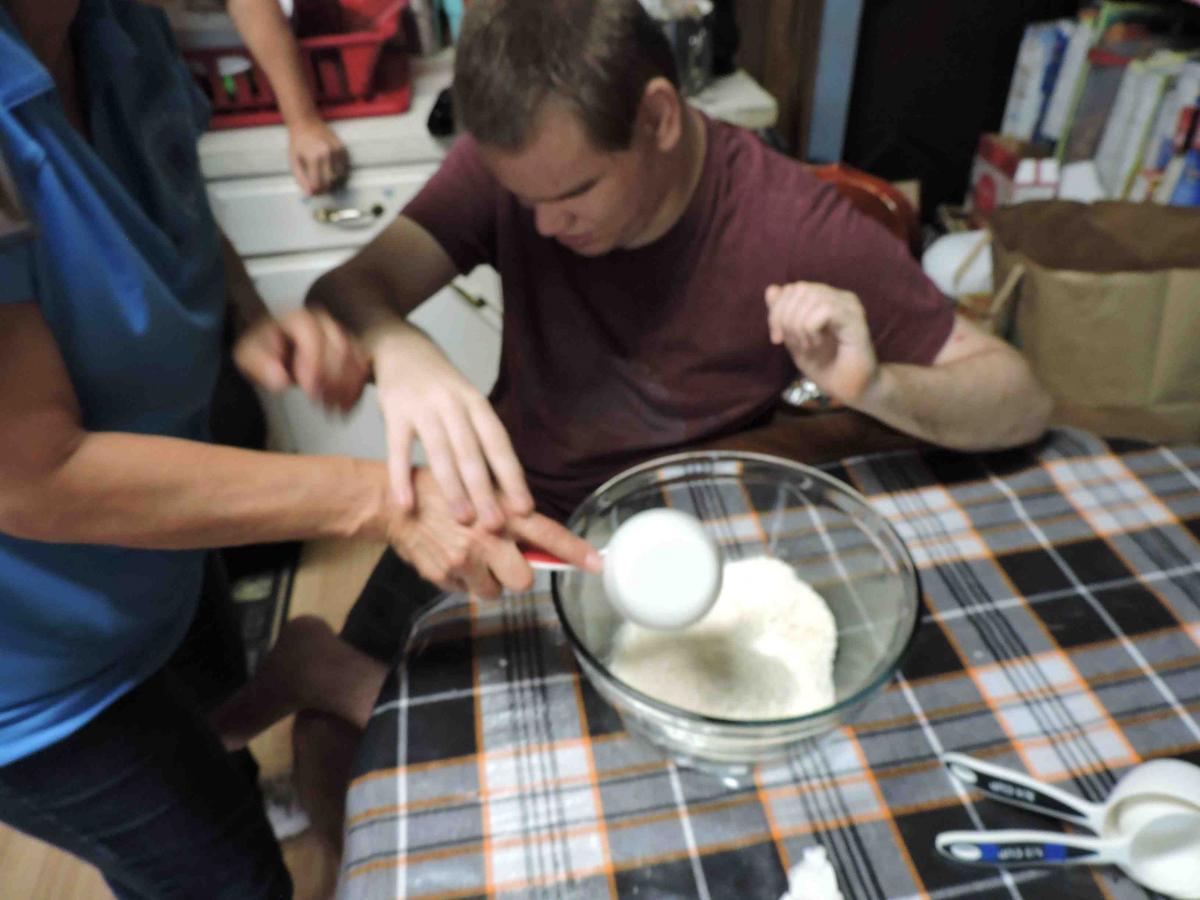
Carryover Between Home and School
I’ve cooked with the student below at both school and at home. By cooking at home with the student, the families are able to see the possibilities. She sees how she can be a vital and contributing member to mealtimes. Her mother already has her included in mealtime prep and simple dishes. By my coming into the home, we can show the family how to adapt the environment to assist the student meet with success. I try to use what the family has at home when we cook, but occasionally I bring in items I have (e.g. liquid level indicator, large print measuring spoons/cups, double spatula). I leave information about where they can find the items that I bring into the home.
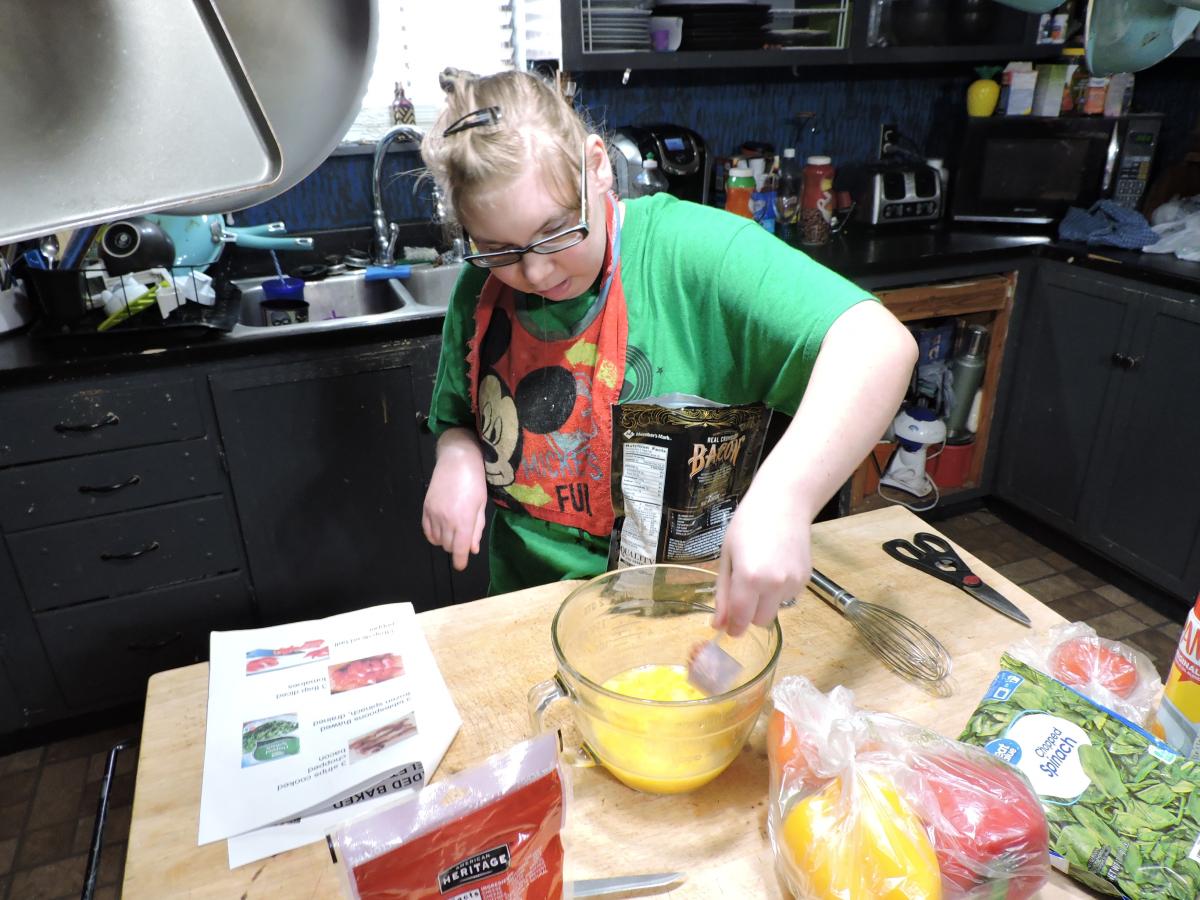
All recipes are left with the families or sent home with the student in a format that both the student and family member can access. I try to let the student lead with the recipe suggestions, but occasionally I will take the lead and determine the recipe, due to all the skills required within it. The OT and speech teacher are frequently invited to these lessons, and I consult with them as well. They have also been known to request that my students make a particular recipe.
The Benefits of Using Recipes to Teach Literacy Skills
Here’s the thing about recipes…food is usually a HUGE motivator! Reading becomes more fun and comprehension tends to increase due to the motivation factor. I have a tendency to sabatoge my students to force communication or problem solving. If they can’t find a measuring spoon, for instance, they have a tendency to search their environment several times before they finally ask for assistance. The speech therapist or I can assist them with verbalizing the question. For example, instead of “need measuring spoon”, we can offer the prompt, “Can you help me find the measuring spoon?” We can also work on vocabulary that is directly related to the cooking activity or the kitchen in general.
Discussions of food allergies always takes place BEFORE any cooking activity. This is an important area for me, and it’s a great way for them to practice self determination skills. I learn what they know and double check with their families. I share my allergies and even discuss what happens when I eat what I’m allergic to. I use this time to talk about the foods we like/dislike and explain how this is different from food allergies. Depending on the student, I sometimes share The 8 Most Common Food Allergies from Healthline and discuss the different reactions. We’ve brought in the nurse to review these as well, and we have occasionally role-played what to do if they ate something by mistake and are having one of the symptoms.
This is a win-win for all. There’s food involved. We talk safety…kitchen, food, and allergy. We communicate. We work with different service providers. We use math skills to practice measurement or doubling the recipes. We get to eat! We practice social skills. We get a chance to shine. We learn about possible careers. We get to share. But most of all, we laugh!
For more ideas, see 7 Real-World Math Strategies from Edutopia.
